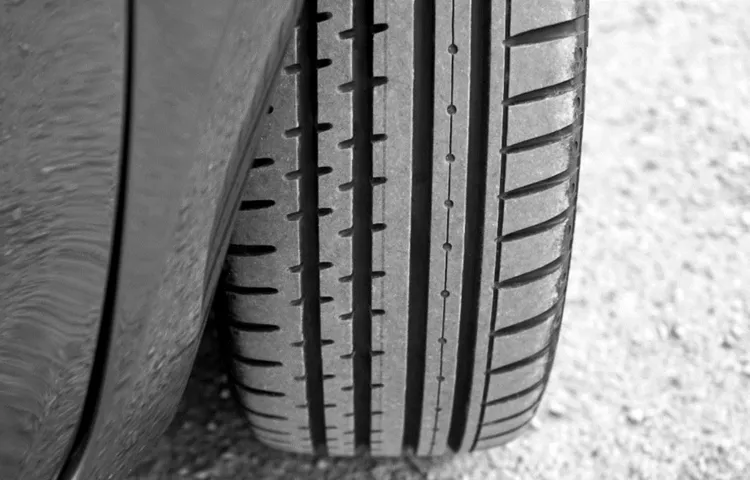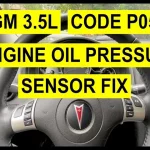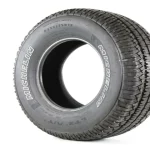Have you ever experienced a flat tire while driving and wondered what caused it? The truth is, tire failures can happen unexpectedly and can be quite dangerous. Therefore, it’s important to be aware of the warning signs of tire failure to prevent any potential accidents. One of the most common warning signs of tire failure is abnormal wear patterns on the tire.
This can be caused by poor alignment, low tire pressure, or even driving on uneven surfaces for prolonged periods of time. If you notice uneven wear on your tires, it’s essential to get them checked by a professional. Another warning sign to look out for is bulges or blisters on the tires’ sidewalls.
These can be caused by hitting curbs or potholes, causing internal damage to the tire. If you spot any bulges or blisters, it’s important to replace the tire immediately as it can lead to a tire blowout while driving. Cracks on the tire sidewalls or on the tire tread can also be warning signs of tire failure.
These cracks develop over time due to exposure to elements such as sunlight and extreme temperatures. If you notice cracks on your tires, it’s best to get them changed as soon as possible to avoid any potential tire blowouts or punctures. In conclusion, being aware of the warning signs of tire failure can help prevent potential accidents while driving.
Regularly checking the condition of your tires and getting them serviced by professionals when necessary can save you from challenging situations on the road. Remember, your safety always comes first, and proper tire maintenance is a crucial part of ensuring it.
Table of Contents
Bulges and Blisters
If you notice bulges or blisters on your tires, it may be a sign of tire failure. These bulges or blisters are caused by weak spots in the tire’s structure, which can lead to a blowout if left unattended. Some of the factors that can cause these weak spots include overloading the vehicle, underinflated tires, and hitting potholes or curbs.
If you notice a bulge or blister on your tire, it’s important to have it inspected by a professional as soon as possible. Ignoring the problem can lead to a dangerous situation while driving. To avoid tire failure, make sure to regularly inspect your tires for any signs of wear or damage and ensure they are properly inflated according to the manufacturer’s recommendations.
Doing so will not only keep you safe on the road but also extend the lifespan of your tires.
Description of Bulges and Blisters
If you’ve ever experienced a bulge or blister on your skin, you know how uncomfortable and unsightly it can be. A bulge is a small bump that can occur anywhere on your body, while a blister is a raised pocket of fluid that often forms after a burn, bug bite, or other injury. Both can be caused by a variety of factors, including friction, pressure, and skin infections.
While most bulges and blisters will heal on their own, it’s important to keep the affected area clean and dry to prevent infection. You can also apply a cold compress or over-the-counter medication to help alleviate any discomfort. If the bulge or blister becomes increasingly painful, red, or oozes pus, it may be a sign of infection and you should seek medical attention to prevent any further issues.

Causes of Bulges and Blisters
Bulges and Blisters Bulges and blisters can be a common occurrence when it comes to buildings. There are a few reasons why bulges and blisters can pop up on your walls. For example, water damage can cause blisters or bulges due to moisture being trapped under the paint.
This can cause the paint to lift away from the wall and bulge outwards, creating a blister. Another cause could be structural issues where the walls are not stable or there is too much pressure on a particular section causing it to bulge outwards. Poor construction can also lead to bulges and blisters due to errors in how the walls were constructed.
It is important to address these types of issues as soon as possible to prevent any further damage to your building. Make sure to consult a professional for any serious building issues.
Vibration While Driving
Have you ever experienced vibration when driving your car? This sensation can be uncomfortable and may indicate a variety of issues, including possible tire failure. Vibrations occur when the tires are no longer balanced, which can cause uneven wear and tear on the tires. If left untreated, it can lead to blowouts or a flat tire while driving, which can be dangerous.
It’s important to have your tires checked regularly to ensure they’re properly inflated, balanced, and aligned. If you notice any vibration while driving, bring your car to a mechanic who can diagnose any tire issues and have them fixed as soon as possible. Neglecting to address any issues could lead to costly repairs down the road.
Remember, it’s better to be safe than sorry.
Description of Vibration While Driving
Have you ever experienced a vibration while driving? It can be a concerning feeling, which may lead to discomfort and even anxiety. Vibration while driving can occur due to various reasons, including tire imbalance, worn-out shocks, and suspension problems. Additionally, issues with the engine or transmission may also cause vibrations.
If you start experiencing vibration while driving, it is essential to get it checked as soon as possible to prevent any further damage to your vehicle. A visit to a trusted mechanic will help determine the cause of the vibration. They will also recommend the necessary repairs needed to restore your vehicle’s smooth operation.
Don’t ignore any signs of vibration while driving; always get it checked promptly.
Causes of Vibration While Driving
Having a car that vibrates while on the road can be a frustrating and uncomfortable experience. Not only does it detract from the overall driving experience, but it can also be indicative of bigger issues that could affect the vehicle’s performance and safety. One of the most common causes of vibration while driving is an imbalanced tire.
When a wheel is out of balance, it causes the vehicle to shake and vibrate, and this can be felt throughout the entire car. Other causes could include worn suspension components, damaged wheels, or a misaligned drive shaft. It’s important to address any vibrations as soon as possible, as they can lead to more significant issues if left unresolved.
Regular maintenance and inspections can help prevent these kinds of problems from occurring, and ensure that your vehicle is operating safely and efficiently on the road.
Low Tire Pressure
When it comes to driving, one of the worst things that could happen is finding out that one or more of your tires have failed. One way to spot an impending tire failure is by checking the pressure. Low tire pressure is usually a sign that there is something amiss with the tire, and it could be the result of a puncture, a leak, or simply poor maintenance.
Driving with low tire pressure is not recommended as it can lead to uneven tire wear, decreased fuel efficiency, and worst of all, a blowout. Therefore, it is essential to keep the tires properly inflated and check the air pressure regularly, especially before a long trip. If you notice a sudden drop in tire pressure, it is best to have it checked by a professional.
Remember, low tire pressure is not just a minor inconvenience, but it could also be a sign of tire failure that puts your safety at risk. So, make sure to pay attention to your tire pressure and keep them in good condition to avoid any unwanted mishaps on the road.
Description of Low Tire Pressure
Low tire pressure can cause several problems for drivers. It can affect the handling of the vehicle, making it harder to turn and maneuver. The fuel efficiency of the car can also be impacted, as low tire pressure requires more energy to move the same distance as a properly inflated tire.
Additionally, low tire pressure can cause uneven wear on the tires, resulting in shorter tire lifespans and the need for more frequent replacements. It’s important to regularly check tire pressure and ensure it’s at the recommended level, as this can not only prevent these issues but also improve overall safety while driving. When in doubt, consult the vehicle owner’s manual or a mechanic to determine the ideal tire pressure.
Consider investing in a tire pressure monitoring system as an added precaution to avoid the inconvenience and danger of driving on low tire pressure.
Causes of Low Tire Pressure
Low tire pressure can be a frustrating issue for drivers, as it can affect the overall performance and safety of a vehicle. There are several reasons why low tire pressure can occur. One of the most common causes is a puncture or leak in the tire, which can be the result of a sharp object on the road or an old tire that needs to be replaced.
Another reason for low pressure can be the temperature outside; as the weather gets colder, the air inside the tire contracts, causing the pressure to drop. Additionally, regular wear and tear can cause tires to lose air over time, and not maintaining proper tire inflation can also lead to low pressure. It’s important to regularly check tire pressure and address any issues promptly to ensure the safety and longevity of your vehicle.
Cracks in the Sidewall or Tread
If you notice cracks in the sidewall or tread of your tires, it may be a sign of tire failure. These cracks, also known as weather cracking, can occur due to exposure to sunlight and extreme temperatures. When your tires are constantly exposed to the elements, they can become brittle and develop small cracks in the rubber.
If left unattended, these cracks can worsen and lead to tire failure, a blowout or a flat tire. It’s important to regularly inspect your tires for any visible signs of damage, including cracks in the sidewall or tread. In the event that you do notice any cracks, it’s best to replace your tires immediately before they become a safety hazard on the roads.
Don’t take any chances when it comes to the condition of your tires, as they play a crucial role in the safety and stability of your vehicle.
Description of Cracks in the Sidewall or Tread
If you take a close look at your car tires and notice cracks in the sidewall or tread, it’s important not to ignore them. These small fissures can indicate various problems with your tires, from aging and dry rot to overloading and underinflation. Cracks in the tread are usually a sign of wear and tear, but if they are deeper than 2/32 of an inch, they can pose a serious safety hazard, especially in wet or slippery conditions.
Sidewall cracks, on the other hand, can affect the structural integrity of the tire and lead to bulges, blowouts, or even loss of control while driving. To avoid accidents and prolong the life of your tires, it’s best to have them inspected regularly by a professional and replaced if necessary. Additionally, you should always maintain the recommended tire pressure and avoid overloading your vehicle, as these factors can contribute to the development of cracks and other issues.
Conclusion
In conclusion, if you find yourself driving and feel like you’re constantly riding over bumps or cracks in the road even when the pavement appears to be perfectly smooth, it may be a sign of tire failure. Don’t ignore these warning signs – they could be the difference between a safe journey and a dangerous one. Remember, trust your gut and take action before it’s too late.
It’s always better to be safe than sorry!
FAQs
What are the common signs of tire failure?
The common signs of tire failure include cracks on the sidewalls, uneven wear pattern, bulges and blisters on tire surfaces, and vibrations or wobbling while driving.
How to prevent tire failure?
To prevent tire failure, you should maintain proper tire pressure, rotate your tires regularly, avoid overloading your vehicle, check your tires for any damage before the drive, and drive cautiously on rough or uneven road surfaces.
How often should I inspect my tires for any signs of failure?
It is recommended to inspect your tires for any signs of failure every month or before going on a long road trip. However, if you notice any unusual vibrations or noises while driving, you should inspect your tires immediately.
Can tire failure lead to a car accident?
Yes, tire failure can cause a car accident, leading to severe injuries or fatalities. Therefore, it is crucial to inspect your tires regularly and replace them promptly if you notice any signs of failure.
Is tire failure covered under car insurance?
It depends on the type of car insurance policy you have. Most comprehensive car insurance policies cover damages caused by tire failure. However, it is essential to check your policy’s terms and conditions to know the coverage details.
What are the different types of tire failure?
The different types of tire failure include tread separation, blowouts, punctured tires, worn-out tires, and underinflated or overinflated tires.
Can driving with worn-out tires lead to tire failure?
Yes, driving with worn-out tires can increase the risk of tire failure as they have reduced traction and can be easily punctured or damaged. It is recommended to replace your tires when they reach the minimum tread depth limit.



